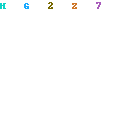Q: My great grandmother was friends and corresponded with a well-known American artist for several years in the late 1800's, and I have a number of letters and two photographs of the artist saved from the relationship. Are these worth anything?
A: Any documents, letters, photographs, and other manuscript materials relating to artists' careers are collectible and have value. Dealers, collectors, museums, archives, and other institutions acquire such items primarily for their historical significance, and occasionally for their value as art objects. These materials provide insight into how artists lived their lives and contain everything from ordinary day-to-day ramblings to important facts about specific works of art, juicy gossip about love affairs, career information, and details of personal lives.
Artist letters can be worth anything from a few dollars each to many thousands of dollars each. On the low end of the price continuum might be a two-sentence letter from a minor artist to an art dealer asking whether the dealer has sold any of the artist's paintings in recent months. At the high end would be an illustrated letter such as one by famous American Western artist Charles Marion Russell. Prime Charlie Russell illustrated letters can top $100,000 dollars each. For the most part, however, average artist letters with average content range in the mid-hundreds of dollars.
In general, the most valuable artist letters are illustrated, and the more finished the illustrations, the more valuable the letters. Good content also increases value. For example, a brief letter from an artist saying hello to the recipient and talking about the weather is worth less than a five-pager detailing an arrangement for the artist to produce a large painting or sculpture for a major collector.
As for photographs of artists, they're evaluated in much the same way as letters. To begin with, artist photographs are generally more collectible than letters because art collecting is a visual pursuit, and photographs are almost always more visual than letters. In terms of value, the more complex and interesting an image and the more important the artist, the more the photograph tends to be worth. A photograph showing an artist at work in his or her studio and surrounded by other artists, for example, is worth significantly more than a simple seated portrait showing the artist from the waste up. Add additional dollars if the photograph is signed or inscribed by the artist, and still more if it is also signed by the photographer, and still more if the photographer is known.
Two additional factors influencing the value of artist photographs have to do with who the photographers were and how old the artists were when the photographs were taken. Briefly, the more important the photographer and the younger the artist, the more valuable the photograph tends to be. Condition, size, and whether or not a photograph is known or published also impact value. Artist photographs range in price from the low hundreds to hundreds of thousands of thousands of dollars each.
A personal scrapbook or file is perhaps the most valuable manuscript item that an artist can maintain during his or her lifetime, and is often the single most important archive relating to that artist's career. Americans in particular didn't start to research and write about their artists, especially lesser known ones, until relatively recently. Many other artists were not fully recognized for their talents until after they had passed away and, as a result, little is known about their lives and careers. Scrapbooks and files pertaining to these sorts of artists are quite valuable and highly sought after.
A better scrapbook or file contains newspaper and magazine clippings about an artist, catalogs of exhibitions that the artist participated in, photographs of the artist in various situations like art openings and events, letters from collectors, and commendations or awards. Items pertaining to the artist's local or regional art community that document activities of fellow artists, critics, dealers and collectors also enhance value. The best scrapbooks and files contain enough detailed information and memorabilia to literally reconstruct artists' entire careers.
Always be on the lookout for any papers or documents relating to an artist's career, no matter how insignificant they might seem. Smaller items are referred to as "ephemera," larger ones as "manuscript materials," and they all have value and they're all worth saving. These include old bills of sale, exhibition catalogues, personal journals, contracts or agreements, business cards, show announcements, and even change-of-address cards or cancelled checks. No matter how much money they may or may not be worth, they enrich our lives and teach us about the history of art.
Source : www.artbusiness.com

0 comments:
Post a Comment